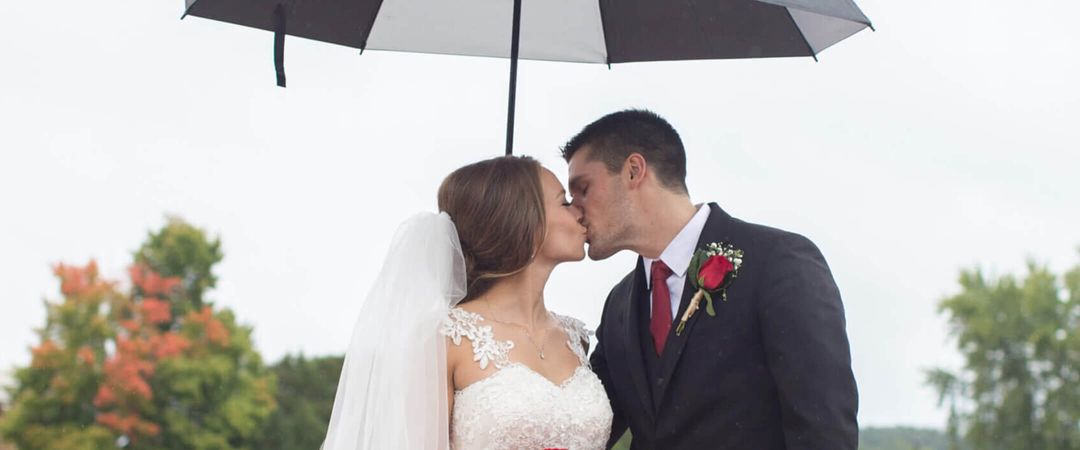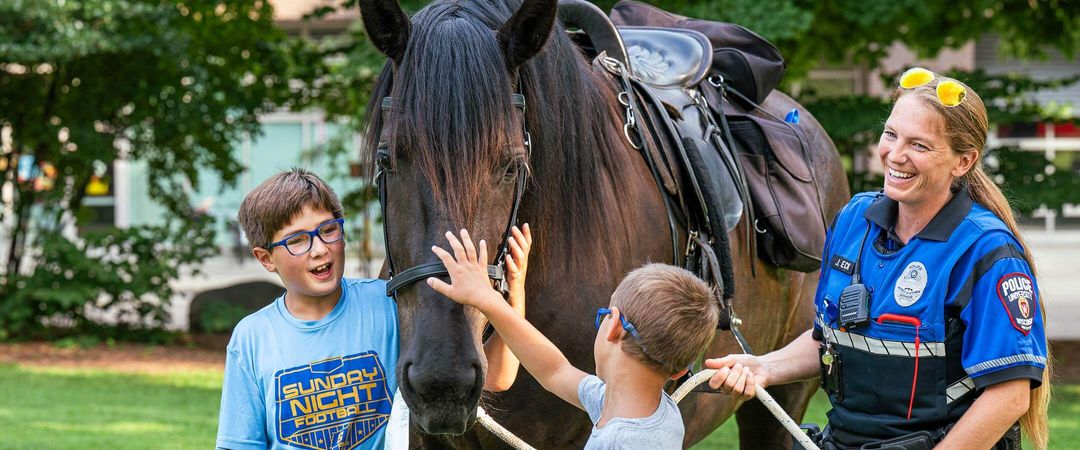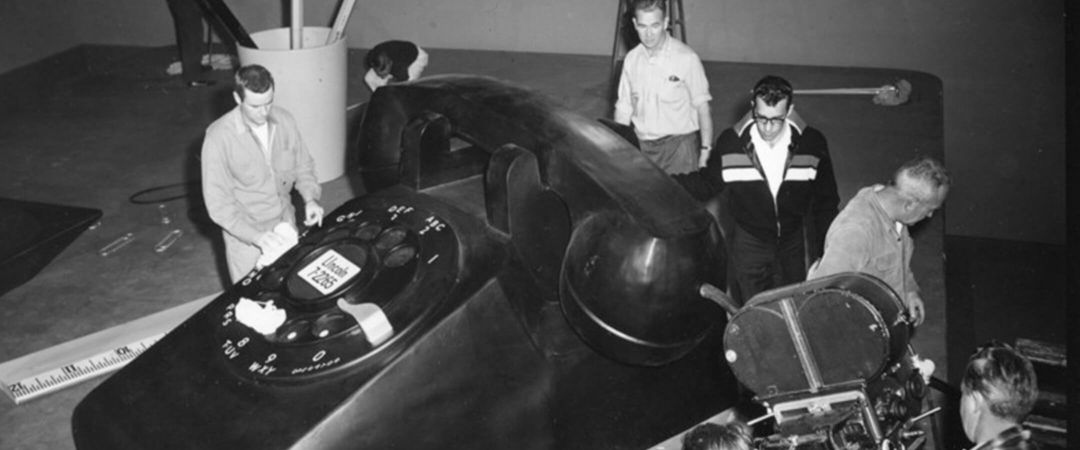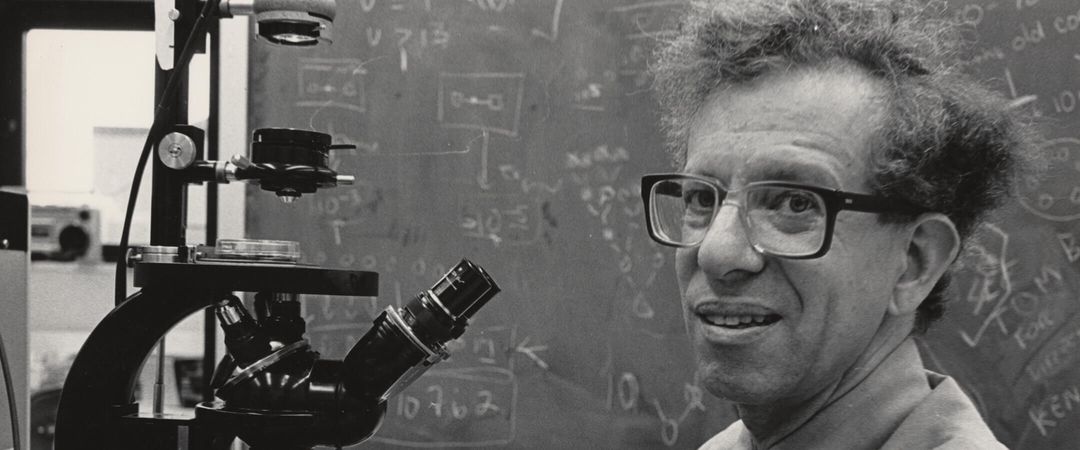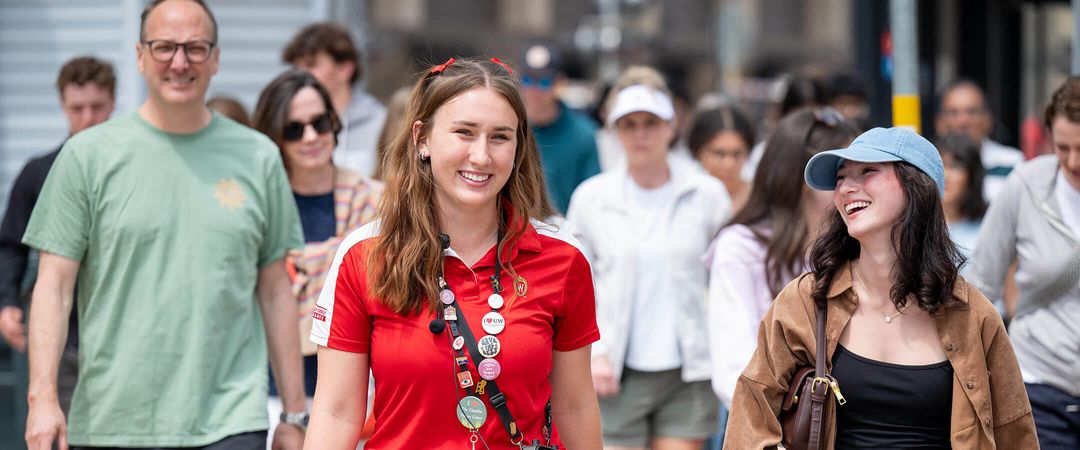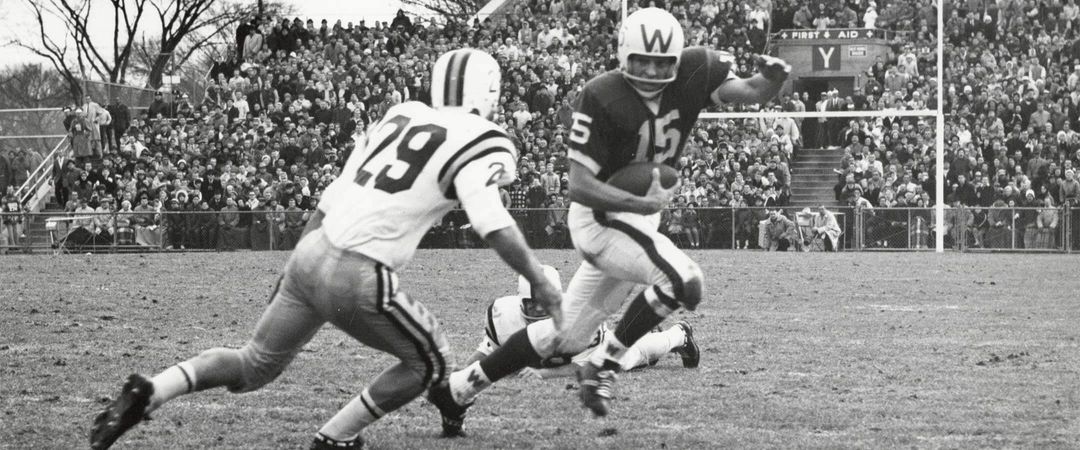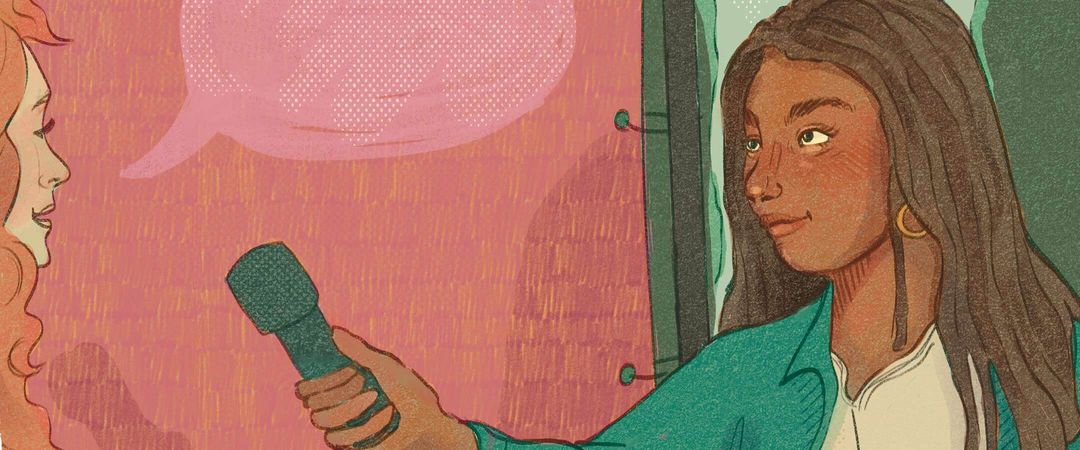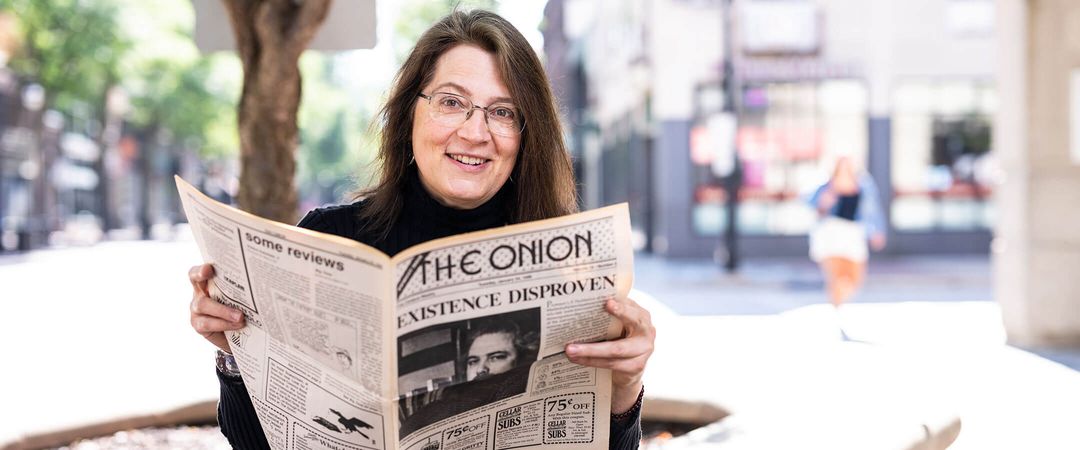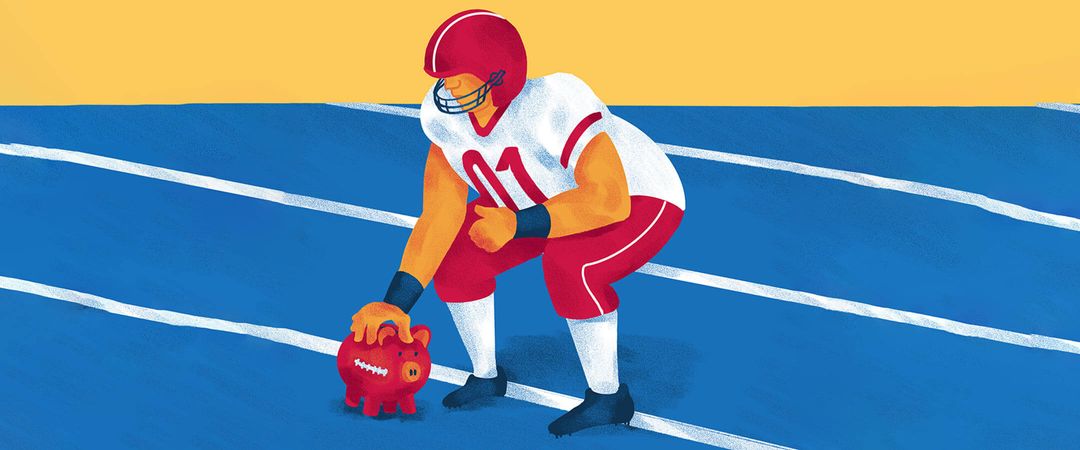The year was 1970, and the embattled UW campus was reeling from tear gas and the chaos of nonstop antiwar demonstrations.
Even in that emotionally charged atmosphere, those who knew David Zucker’s irrepressible sense of humor expected a funny and entertaining commencement speech from their senior class president. What they actually heard, however, were solemn remarks that railed against the Ohio National Guard for firing on protesting students at Kent State and that implored the graduates to help stop society’s immoral repression of African-Americans. The only note of humor came when he fumbled badly over a sentence and quipped, taking a deep breath, “It’s been a tough year!” The audience roared.
Zucker may have been caught up in the prevailing somber political environment, but a few short months later, he capitulated to his comedic muse. In 1971, he formed the legendary comedy troupe Kentucky Fried Theater, along with his brother Jerry Zucker ’72, Jim Abrahams x’66, and Dick Chudnow ’67.
There are two memorable times in my life that I’ve laughed so hard that I had trouble catching my breath. Both times were in a packed audience at Kentucky Fried Theater. It was the funniest show I had ever seen, and looking back, it still is.
The marvel, of course, is that when one thinks of campus life in the early seventies, comedy isn’t what usually comes to mind: it’s the antiwar protests, the sit-ins and tear gas, Black Power, and the bombing of the Army Math Research Center. I remember being inundated, almost assaulted, with pamphlets from the scores of activists who lined the sidewalks and stairs outside the Union and along Library Mall. State Street often looked like a war zone, and the boarded-up store windows were covered with antiwar graffiti.
Like a flower blooming in winter, KFT somehow managed to overcome this inhospitable environment and flourish. The show not only thrived, it quickly became a local institution, eventually moved to Hollywood, and ultimately became a powerful influence on modern American comedy. If this seems like hyperbole, it isn’t.
Kentucky Fried Theater’s films, including such memorable movies as Airplane!, Ghost, The Naked Gun series, Ruthless People, Top Secret, and Hot Shots!, have earned well over a billion dollars at the box office. But considering the lofty heights of show business success that KFT was to reach, its beginnings were humble.
David Zucker’s first summer after graduating from the UW was marked by a distinct lack of direction. Without professional prospects, he unhappily settled for a job gluing together furniture. To entertain himself, whenever a fly would pass his booth, he’d spray it against the wall with glue and then label it like a museum exhibit, with the date and time of extinction. His fly collection quickly became a factorywide attraction.
At twenty-two, however, with a degree in radio, film, and television, gluing insects was not the career David had expected. His father tried to think of a way to raise his son’s spirits. David had made some humorous and inventive student films starring his brother. One of them, The Best Things in Life Are Free, was about a “high”-spirited student on campus who desperately needed to urinate but couldn’t find anyplace to do so until he finally climbed the Lincoln statue on Bascom Hill.
Fred Bliffert x’70, whose popular R&B band, Freddy and the Freeloaders, often played concerts for the frat houses on Langdon Street, remembered laughing so hard when he first saw the films at a private screening that his jaw got numb.
That summer of post-graduation discontent, David occasionally ran into his old friend Jim Abrahams, who was notorious for the humorous pranks that he and his roommate, Dick Chudnow, used to pull in Memorial Library. For example, in the spirit of street theater, Abrahams would wrap his foot in bandages to resemble a cast, and hobble into a study room with an armful of books. When Abrahams arrived, Chudnow got up to leave, and as he passed Abrahams, he kicked the cane out from under him and down he went — splat! Books everywhere. Chudnow would grab the cane and whack Abrahams with it a few times and then run.
Sometimes people applauded the street theater, and at other times, they thought it was real and got angry. Once, a couple of outraged students chased after Chudnow all the way out into the street. “It was either do [stuff] like that or study,” says Abrahams.
The turning point for what would become Kentucky Fried Theater occurred one summer evening when David drove to Chicago to visit a girlfriend. They saw an underground comedy show called “Void Where Prohibited by Law.” David remembers, “We sat on a gigantic waterbed in this loft and watched about seventy minutes of awfully primitive, grossly scatological video sketches, and it was like nothing I had ever seen before. I laughed until I had tears running down my cheeks.”
That’s when his fateful epiphany struck. Instead of returning home to Milwaukee, David drove straight to his brother’s apartment in Madison and told Jerry what he had just seen and what it meant: “We can do that!”
Allen Estrin, who teaches screenwriting at the prestigious American Film Institute, quips that if David had experienced a flat tire that night on the way to Chicago, the course of American comedy would have been very different.
David and Jerry started assembling a short list of the funniest people they knew. Their first call was to their prankster friend Abrahams, who in turn enlisted Chudnow. The foursome met to discuss their comedic ideas, deciding that they would form a partnership, and each put up $200.
From the outset, they had an almost mystical belief that they were destined for greatness, so much so that they had a photo taken just as they agreed to their partnership to preserve the historic event for posterity. From the very start, they were a team of all-stars. They shared a MAD magazine/rock ’n’ roll/TV-generation synchronized sense of humor that gave them comedic power. Like the Beatles, there was strength in their unity — they were a team that was greater than the sum of its parts.
They experimented with video equipment that David and Jerry’s father had borrowed on their behalf, and corralled friends to brainstorm and improvise. David and Jerry’s mother did a TV ad parody about the “miracle thimble” that featured Mrs. Zucker demonstrating how the sewing implement was used and then showing it to the camera — in effect giving the audience the “bird.”
Their initial inclination was to create stage sketches that mirrored the social and political targets then in vogue, such as military service, President Nixon, recreational drug use, and the generational divide. “We avoided politics — we just wanted to make people laugh,” Chudnow says.
Jerry Zucker also avoided political confrontations. One day a block party right in front of his rented house on Mifflin Street turned into a showdown with police. His roommate, Andy Straus ’72, went outside and got tangled up in the ensuing violence. The conflagration was broadcast live on network TV, and Andy’s parents saw the broadcast and realized where it was occurring. Worried, they called and asked to speak to their son. Jerry told them, “Andy can’t come to the phone right now. He’s outside rioting.”
In its earliest days the KFT enterprise floundered for direction. The partners considered delivering their comedy directly to people who would order it by phone, just like fast food, and that led them to the name they ultimately chose: Kernel Sanders Kentucky Fried Theater.
But they ultimately settled on doing a show, and set out to find a home for it. They eventually settled for a large second-floor room above the Daisy Cafe at 619 West Washington Avenue.
The foursome divided up responsibilities, and in February 1971 they started renovations, building a stage, wiring for lights and sound, painting, carpeting, and constructing a control room. When they weren’t building, they were writing sketches. They were exhausted and exhilarated but ready to open when disaster struck. Three days before the opening of their premiere show, a building inspector who had been feuding with their landlord put them out of business, citing city zoning regulations. It was a gut-wrenching setback for Kentucky Fried Theater, but it was only the first of many obstacles.
Moving beyond the disappointment, the partners took stock. KFT was homeless, but they did have a show. Perhaps they could transport the equipment, sets, chairs, and props to a temporary stage, they thought. They got lucky. The newly opened Union South offered to provide the necessary space, and a deal was struck to put on ninety-minute performances over four consecutive weekends in May 1971. They would have to laboriously set up the equipment and then strike it after every show, but getting the act off the ground would be worth the extra toil.
They advertised and put up posters, and opening night attracted a good-sized audience. The show started off smoothly enough, but there was an unexpected complication. David had invited a friend who had a loud, infectious laugh to come see their premiere performance, theorizing that it couldn’t hurt to have one really good laugher in the audience to help things along. According to Chudnow, from the first sketch, the guy was laughing hysterically — but never at the right times. He would scream with laughter, with tears running down his face, but it turned out that he had taken LSD and was experiencing an acid trip. He was watching a broken clock on the wall and he thought time had ceased, and that was what triggered his hysteria.
It seemed as if time really had stopped. The four had never actually rehearsed the whole show together, and with each passing sketch, it became clear that they had badly misjudged the amount of material they had. On top of that, some of the projection equipment failed, so they had to skip some video segments. About twenty-five minutes through their ninety-minute show, they ran out of material.
Flummoxed, they declared an intermission, buying a few minutes to decide what to do about their fiasco. A fevered debate broke out backstage about just how much cash they should refund to the audience. Meanwhile, Chudnow went out and improvised an audience participation performance using theater games he had learned studying improv. The audience loved it and never suspected how truly improvised it was. In later years, Chudnow would look back at that experience born of desperation as the inspiration that led to his cofounding the ComedySportz clubs, which engage the audience in improv games in support of two competing teams of professional actors.
KFT’s first appearance in public had been a debacle, their show was homeless, and they clearly didn’t know how to produce a tightly organized performance. But they did get one break. George Hesselberg ’73, a reviewer from the Badger Herald, had been in the audience and gave them a great write-up: “I wandered into the opening performance last Saturday evening without the slightest idea what to expect. The show is almost impossible to review because I still don’t know what to expect if I go to the next performance. All I can say is that it was the funniest evening I’ve spent in a long time.”
Looking back, David says, “Of all the thousand odd reviews we have ever received, his was the most important, and best remembered.”
Hesselberg, who later wrote a longlived column for the Wisconsin State Journal, never knew that his glowing review raised the spirits of the four KFT guys at that nadir and inspired them onward.
I asked Hesselberg what he remembered about KFT. “Of course they were very funny,” he recalled, “but what I was the most impressed with is how serious they were about being funny. The ‘seriousness’ was everywhere at that time, the antiwar feelings and all. There was a big hole in the humor blanket — and here are these guys being very serious about being funny. Their arrival on campus — their timing — was perfect.”
With the group’s first show under its belt, fate intervened: KFT’s theater dilemma was solved by the most unlikely of benefactors, the city inspector who had closed them down at the Daisy Cafe. He called and told them about a bookstore on the corner of Regent and Randall Streets called Shakespeare & Company, a building with a spacious storeroom that just about fit their needs. Once again, the guys rolled up their sleeves, and the renovations began. Industriously they rewired, repainted, fabricated a stage, and constructed a control room. On July 23, 1971, they were ready to give it another shot. A better-written and rehearsed rendition of Vegetables opened with added cast members Lisa Davis, Chris Keene ’72, MFA’77, and Bill West ’72.
My sister, Barbara Markey Bornstein ’74, a school psychologist at Nicolet High School in Milwaukee, remembers that even as the audience entered the brand-new theater, they knew they were in for something unique and imaginative. “Film projectors projected these full-sized images on the side walls and on a front screen,” she recalls. “The cast members seemed to be throwing Frisbees back and forth.” The illusion was astonishingly real.
One sketch, “A Night at the Feelies,” subjected the audience to interactive caresses from ushers who were acting out an imaginary movie’s ludicrous romantic scenes. When the actors embraced in a moment of passion, the ushers ran their hands through the patrons’ hair, and when that passion suddenly turned into a heated lover’s spat, the ushers slapped the patrons silly. It was impossible to watch that sketch and not identify with the hapless victims — and to look over your own shoulder, in between belly laughs, to see if there was a “Feelies” usher preparing to engage you.
The show included some memorable video segments, such as that of a real country western band that had been edited and dubbed so they appeared to be playing an acid rock version of “Ina-Gadda-Da-Vida.” The editing was amateurish and the sound was poorly dubbed, but the incongruity of the visuals and the music was innovative, leaving the audience wondering where these guys came up with this stuff.
The biggest laughs came in a video segment that featured a TV newsman who was able to see back through the TV tube as an amorous couple engaged in some R-rated lovemaking in front of their television. The anchorman waved over a few of his crew, and they leered through the two-way TV at the increasingly heated makeout session until the couple noticed them watching and abruptly stopped. The clash of realities between the peeping toms on TV and the lustful couple on stage was a showstopper.
Some of the best-received bits were just outrageously silly behavior, such as “The Fried Egg.” The stage lights came up on Jerry on his knees, his body tucked into the shape of an egg. Accompanied by amplified sound effects, he cracked himself on the head, fell flat on the stage, then undulated like an egg being fried to the sound of sizzling. As the frying sounds reached their crescendo, Jerry’s gyrations also climaxed, and with unexpected grace he flipped himself over to cook on his other side. In a recent interview in the Milwaukee Journal-Sentinel, Jake (Thomas) Leinenkugel x’75 fondly recalled seeing the KFT show as a freshman in 1971 and revealed that he still performs his version of the fried-egg routine to entertain special visitors to his family’s brewery in Chippewa Falls.
Through laborious trial-and-error in front of demanding audiences, KFT perfected these sketches and began formulating the practical rules of comedy that would shape their future movies. They learned how to use what they called “comedy judo,” the art of using the audience’s expectations to trick them. They found that building a joke on top of another joke usually doesn’t work — that jokes need to be rooted in reality. For instance, in The Naked Gun films, you never see Leslie Nielsen hamming it up for the camera, which would be a distraction from what is really funny — his dialogue.
Perhaps most important to their future success, they developed a rapidfire, “three-jokes-a-minute” comedic pace. “When we were on stage in the Kentucky Fried Theater, we hated to be up there for very long without hearing the audience laugh,” says David. “None of us had any desire to tramp around on that stage to the sound of silence. The audience was there to laugh, and if they weren’t, well, it was just embarrassing! If a joke or a line didn’t work or was superfluous, out it went, immediately. That’s where we learned editing and pace. Everything had to be a joke or a set-up to a joke — a kind of comic ruthless efficiency.”
Abrahams adds, however, that they learned an even more important rule: “There are no rules!”
After their opening week, the press reviews came pouring in: the Daily Cardinal wrote, “For theater goers who thirst for innovative, imaginative comedy, this zany bunch may provide the highlight of the summer.” The Badger Herald arts editor said, “I am straining my vocabulary to try to think of the words to describe Kentucky Fried Theater. About all I can come up with is this: it is great. It is funny. It is refreshingly unique. It is the best show in town, don’t miss it.” Tickets sold out the rest of the year.
After a year of SRO shows, the four turned their thoughts to opportunities in New York or Hollywood. Dick settled the matter: “I don’t know what you guys want to do, but I’m going to Hollywood.” At the end of the school year, they packed the chairs, sets, props, and costumes into a rented truck and headed west. They drove past Camp Randall Stadium as Jerry’s graduation ceremony commenced without him — and went on to have a major influence on popular culture.
Testimonials from many of America’s leading comedy pros speak to their effect on television and film. “I used to sit at home with my friends in high school and watch Kentucky Fried Movie and Airplane! and vomit from laughing,” says Matt Stone, co-creator of television’s South Park.
“When Trey (Parker) and I came to L.A., one of our first gigs was working on a Zucker project. It was like working with one of your gods. Of course, now we don’t even return their calls,” he quips.
Peter Farrelly, director and writer of Dumb and Dumber and There’s Something about Mary, was a self-described “superfan” of the KFT comedy style, and later broke into show business writing a 1987 Zucker Brothers TV pilot, “Our Planet Tonight.” He told me, “The Marx Brothers, Jerry Lewis, and the Zuckers were my favorites. Almost every comedy we’ve made owes something to their style and their approach.”
And according to Wikipedia, Seth MacFarlane’s popular animated series, Family Guy, owes much of its comedic approach, including “slapstick gags, deadpan one-liners, non sequiturs, flashbacks, absurdity, and pop culture parody” to the KFT movies, particularly The Naked Gun, to which the show has paid open homage.
For some, it is not at all surprising that KFT took root in the turbulent early seventies. Tino Balio, UW professor emeritus of communication arts and an expert on entertainment and popular culture, says, “There was a rebellion against cultural conventions and an experimentation with anarchy at the heart of many student artists in Madison at that time, such as Kentucky Fried Theater and Stuart Gordon’s production of Peter Pan at the Broom Street Theater.” Balio adds that KFT “embodied that irreverent attitude that mocked all things traditional of the popular culture of the 1950s and early 1960s. It’s a style that still reverberates and influences comedy today.”
That Madison-grown, grassroots approach to comedy was quickly absorbed by other elements in popular culture. In Live from New York — The Uncensored History of Saturday Night Live, author Tom Shales says that SNL producer Lorne Michaels and Chevy Chase had been combing comedy clubs all over the country looking for ideas when they saw KFT in Los Angeles, and on the way out, Michaels declared, “That’s the show we should do.” Shales says that Michaels took Dick Ebersol, head of NBC’s late-night programming, to see KFT to show him what he was talking about. On the way out, Ebersol said, “That’s the hardest I’ve ever laughed.”
When Al Franken was interviewed to be a writer on Saturday Night Live, Lorne Michaels asked if Franken had ever seen Kentucky Fried Theater. Franken remembers, “Lorne went on about how the ‘Fried’ guys assaulted the audience with non-stop jokes that left you gasping for air.”
Ironically, thirty years later, Jerry Zucker was invited back to campus to deliver the 2003 commencement address. Unlike his brother’s solemn speech of many years ago, Jerry’s talk was funny and optimistic — and was punctuated by bursts of laughter. He advised the new graduates not to be afraid of failure, explaining that a big part of success is allowing yourself to make mistakes.
It’s a lesson that a once-struggling comedy troupe born on a troubled campus has proved over and over.
Rich Markey x’71 has written and produced TV comedies with the Zucker Brothers, programs for PBS and the History Channel, and reality comedies for Showtime, HBO, and UPN. He has a master’s degree in cinema/TV and is currently writing a book about the evolution of American comedy.
